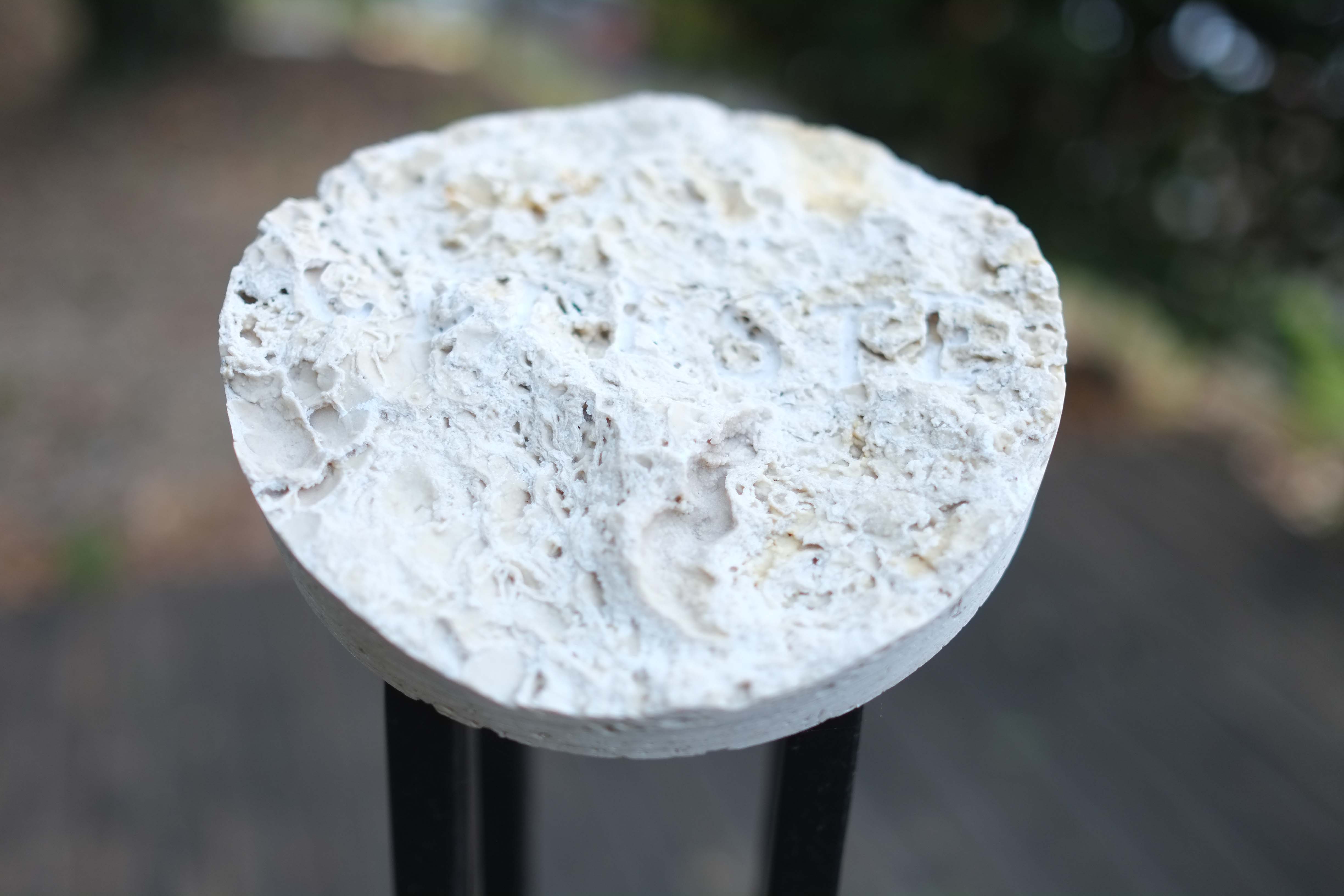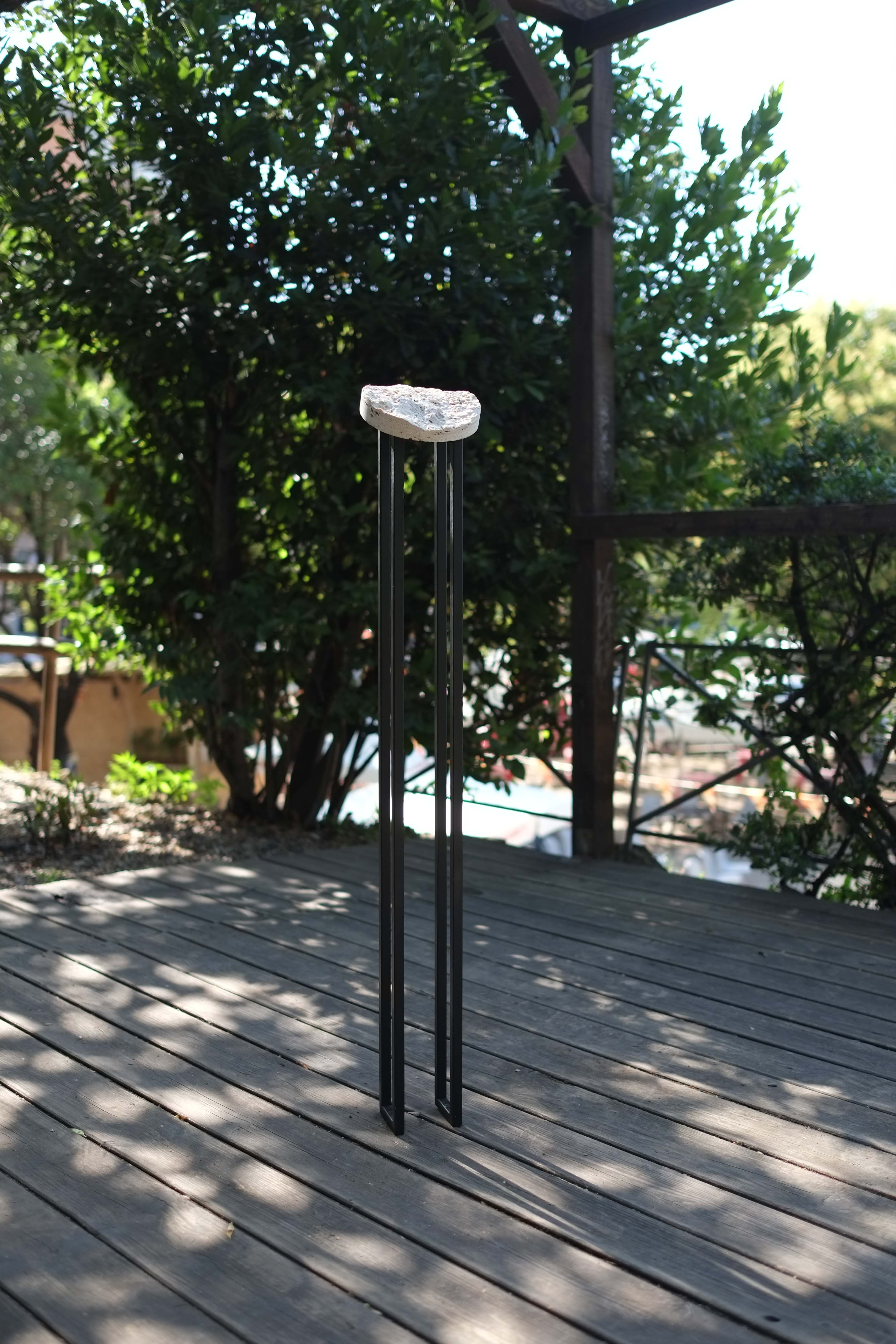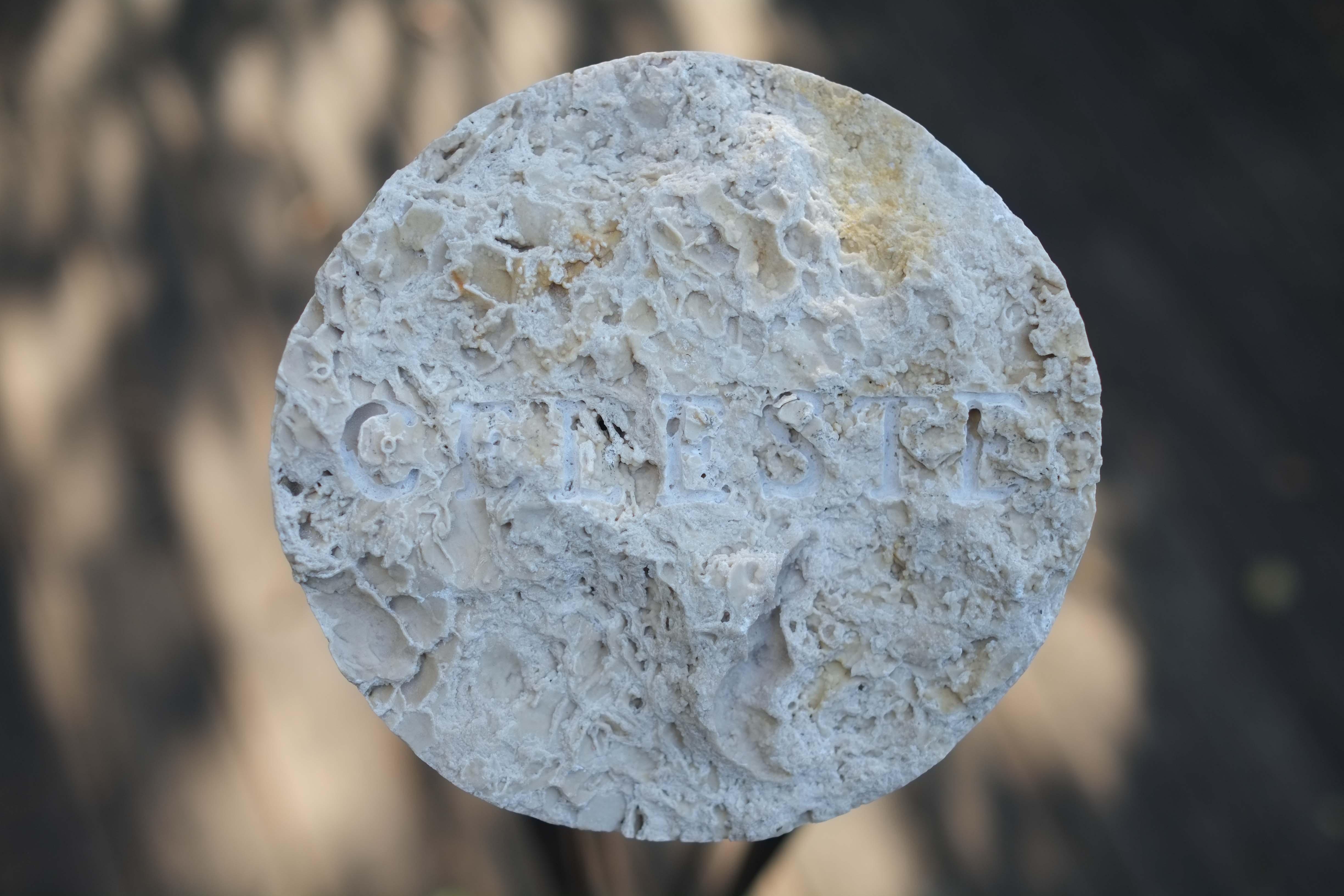Celeste
Curatorial text
Michela de Beccis
E li atti e li sembianti ched i’ foe Son come d’om che ’n gravitate more.
Anica Huck tells me that two scientists, Karl Glazebrook and Ivan Baldry, searched for the color of the universe. They searched out more than 200,000 galaxies and the cosmic spectrum and using a complicated unification system, and came to the conclusion that the perceived color of the universe is a light beige.
Huck then decides to take care of our disappointment, rather, the disappointment of our imaginations contemplating a universe of infinite and beautiful colors and shades that captivate us precisely because they are not tranquil. It’s necessary that caring requires intimacy, reciprocity, closeness, invitation and willingness to enter in with due delicacy. Thus was born a delicate and slight circle of travertine where to go and look for the polysemic word ‘CELESTE’ that offers not only the possibility of a delicate and soft color, but also that of immediately raising one's gaze and staring at the sky of which the color is an adjective, or remembering that it is synonymous with grace and harmony.
Travertine is the stone of Roman monumentality, from the Colosseum to the colonnade of St. Peter's, but to the artist this disproportionate historical heaviness, often crumbling, eroded, and therefore disturbing, concerns her but does not need her. She opens the travertine, of that same beige of the universe, and invites us to look inside, to discover that in every material consists delicacy and fragility, that this is a stone made of small cavities within which light stops, ready to return modified depending on how the gaze is positioned. This is how it becomes necessary to approach, to find the time and discover that there the celestial awaits us. Which is then nothing more than the expectation, the most frequent response, regarding what the color of the universe is.
The approach to a small, dense piece of travertine, inside a small piece of town thus serves, in Huck's work, not to understand our going out into the world as limiting, but rather to discover that although one is part of one galaxy, indeed an almost indiscernible point of one galaxy, that we cannot even imagine what the criterion of unification may mean, is that the maximum distance that is theoretically possible for human beings to observe is contained in the observable universe, as well as all this serves to bring within us a universe of very young stars that are, indeed, celestial.
Mi racconta Anica Huck che due scienziati, Karl Glazebrook e Ivan Baldry, hanno cercato il colore dell’universo. Hanno scandagliato più di 200.000 galassie e lo spettro cosmico e usando un complicato sistema di unificazione sono arrivati alla conclusione che il colore percepito dell’universo è un tranquillo beige.
Huck decide allora di prendersi cura della nostra delusione, meglio, della delusione della nostra immaginazione che contempla un universo di colori e sfumature infinite e bellissime che ci avvincono proprio perché non tranquilli. Prendersi cura richiede necessariamente intimità, reciprocità, vicinanza, invito e volontà di entrare dentro con la dovuta delicatezza. Nasce così un delicato e lieve cerchio di travertino dove andare a cercare la polisemica parola CELESTE che non offre solo la possibilità di un colore delicato e tenue, ma anche quella di sollevare subito lo sguardo e fissare il cielo di cui il colore è aggettivo, oppure ricordare che è sinonimo di grazia e di armonia.
Il travertino è la pietra della monumentalità romana, dal Colosseo al colonnato di San Pietro, ma all’artista questa sproporzionata pesantezza storica, spesso diroccata, erosa e quindi inquietante, la riguarda ma non le occorre. Apre il travertino, di quello stesso beige dell’universo, e ci invita a guardare dentro, a scoprire che in ogni materia consiste delicatezza e fragilità, che è questa una pietra fatta di piccole cavità dentro cui la luce si ferma, pronta a restituirsi modificata a seconda di come lo sguardo si posiziona. È così che diventa necessario accostarsi, trovare il tempo e scoprire che lì ci attende il celeste. Che è poi null’altro che l’aspettativa, la risposta più frequente, riguardo a quale sia il colore dell’universo.
L’avvicinarsi a un piccolo e denso pezzo di travertino, dentro un piccolo pezzo di città serve quindi, nel lavoro di Huck, a non intendere come limitante il nostro andare nel mondo, ma piuttosto a scoprire che benché si sia parte di una sola galassia, anzi di un punto quasi indiscernibile di una sola galassia, che non si immagini neanche cosa possa voler dire il criterio di unificazione è che la massima distanza che è teoricamente possibile osservare per gli esseri umani è contenuta nell'universo osservabile, ebbene tutto questo serve a portare dentro di noi un universo di stelle giovanissime che sono, appunto, celesti.
Year
2023
Sculpture
Travertine, iron base
100 x 15 x 15 cm


